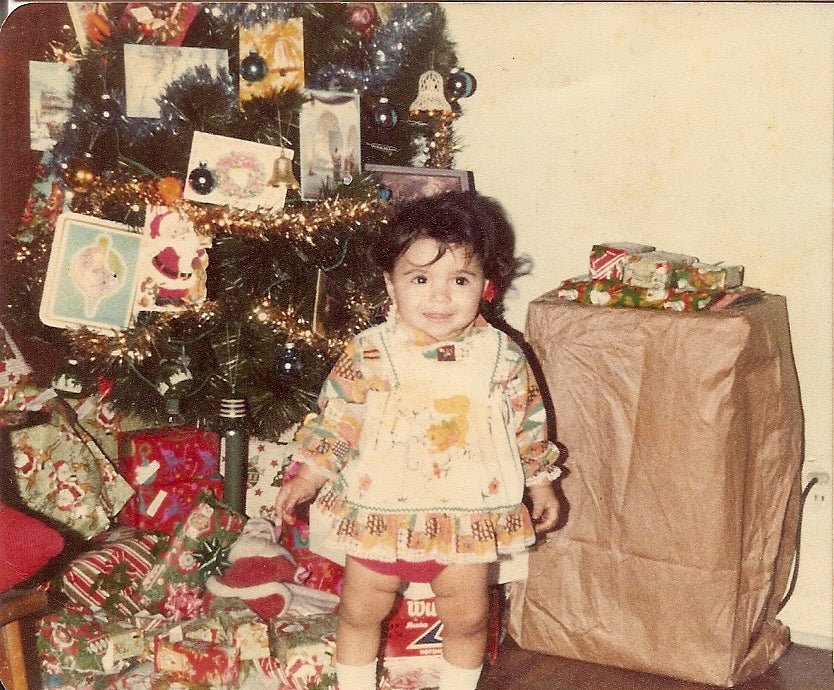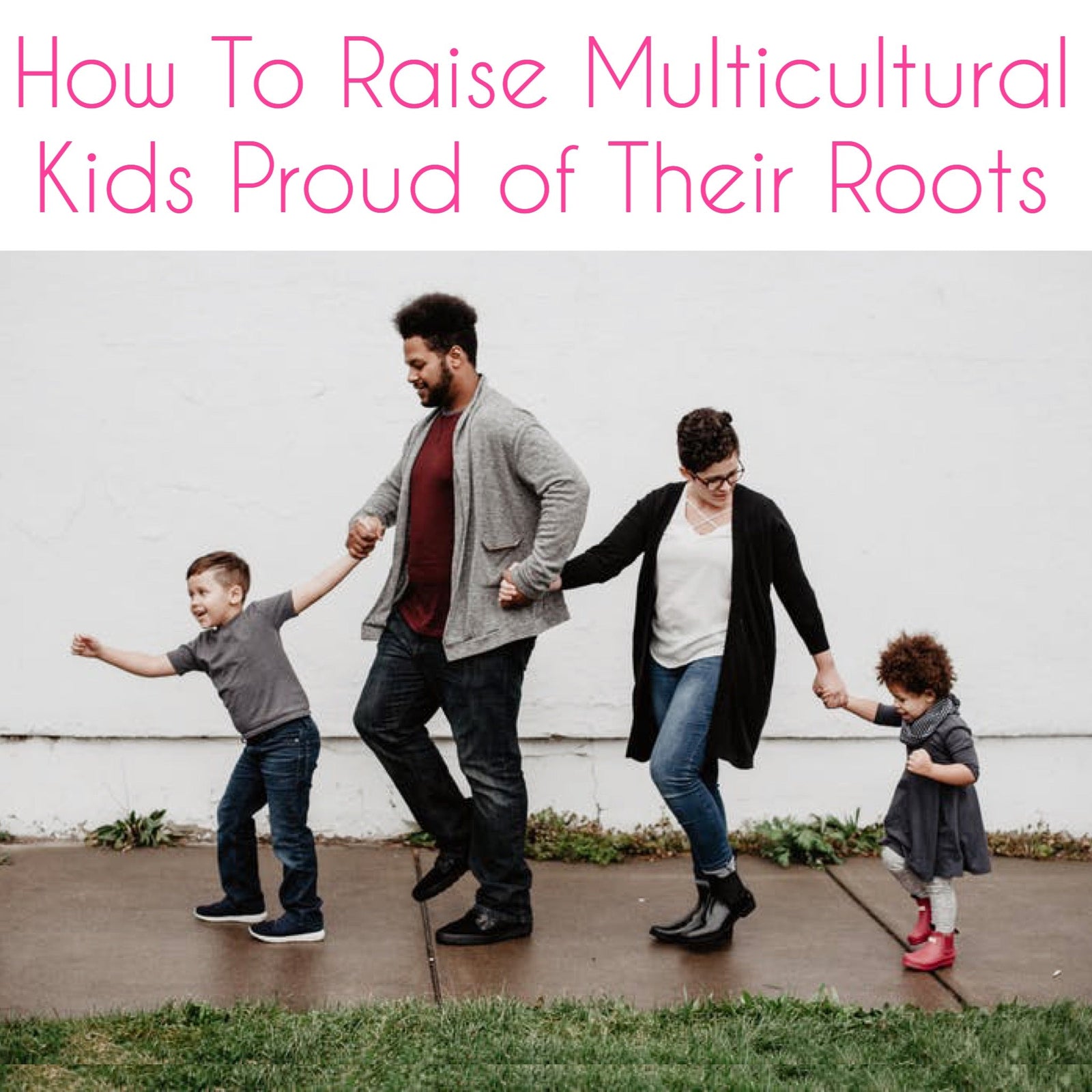
As a Latina mom, it’s important for me that my child grows up understanding our family’s Christmas traditions. As Latinos, there are many traditions you can embrace and pass down. It’s a way we can honor our history while embracing and creating new traditions of our own. Every family has their own traditions, whether it’s hosting a tamalada, attending la Misa de Gallo, or making natilla and buñuelos, you can incorporate any of these holiday traditions, even with your youngest of kids.
Latino Christmas Traditions to Pass Down to Your Kids
El Arbolito de Navidad & El Pesebre
El arbolito de Navidad or the Christmas Tree is part of many Latin American homes, but in many, the main focus is El Pesebre, the Nativity Scene. For many, El Niño Jesus or El Niño Dios (Baby Jesus) or Los Reyes (Three Kings) bring gifts instead of Santa Claus, so gifts are laid out near the nativity scene instead of a tree. You can create a tradition of decorating your tree and incorporating a Pesebre. Last year my daughter and I created an easy foam Nativity Scene that we incorporated into our tree.
El Dia de Las Velitas
El Dia de Las Velitas, or Day of the Little Candles is a big Colombian holiday tradition to kick off the Christmas season. It is celebrated on December 7th on the eve of the Immaculate Conception. Every year thousands of candles, lanterns, and lights are lit everywhere from homes, churches, to squares to honor the Virgin Mary. One way to pass down this tradition is to attend mass and light a candle or you can light a paper lantern or create one at home with a simple paper bag and battery tea light.
Las Posadas
Las Posadas or "The Inns" is a 9-day religious celebration re-enacting Mary and Joseph's journey to Bethlehem in search of shelter. Beginning on December 16 through December 24, Las Posadas is celebrated in Mexico and similarly in other Latin countries. It consists of a procession to a different chosen house each night. There will often be 2 people dressed as Mary and Joseph, accompanied by song, prayers, festive foods, and ends with a piñata in the shape of a star. Sometimes prayers or bible passages are read and big parties or small intimate gatherings await. To celebrate Las Posadas with your kids you can create your own DIY piñata or teach them a traditional posada song. For more ideas check out our Pinterest Board Navidad Latina.
Comida Navideña
ComidaNavideña, Christmas Food is at the heart of a Hispanic Christmas and depending on where your family is from there are many yummy options you can make or even buy. Here are a few favorite Chrismas foods and drinks by country:

Argentina: Pan dulce, turrón, and mantecol.
Bolivia: Picaña, pantéon, cola de mono, turrón, and buñuelos.
Chile: Pan de Pascua, turkey, cola de mono, and ponche de chirimoya.
Colombia: Natilla, buñuelos, hojuelas, sancocho or ajiaco, and lechona.

Costa Rica: Rompompe, tamal Navideño, queque Navideño, and roast pork.
Cuba: Lechon asado (Roast Pork), turrón, crema de vie, moros y cristianos.
Dominican Republic: Telera bread, pasteles en hoja, roast pork, moro de guandules.
Ecuador: Arroz navideño, rompompe, buñuelos, and roast pork.
El Salvador: Turkey with gravy, pan con recauldo, panes con pollo.
Guatemala: Chiles rellenos, ponche, buñuelos, and tamales.
Honduras: Tamales, torrejas, rompopo, and sandwiches.
Mexico: Tamales, roasted turkey, roasted pork leg, pozole, champurrado, and rompope.

Panamá: Arroz de guando, tamales, ham, and turkey.
Paraguay: Paraguayan beef, sopa paraguaya, and clericó.
Peru: Turkey, roast chicken, tamales, panetón, and applesauce.
Puerto Rico: Arroz con gandules, pasteles, coquito, and perníl.

Uruguay: Barbeque lamb or pork, potato salad, pan dulce, and cider.
Venezuela: Hallacas, pan de jamón, dulce de lechoza, and ponche crema.
With so many delicious Latino foods, ingredients may be hard to find. However, today you can find just about anything online like http://www.amigofoods.com a Latino only online grocery store featuring products from every country. Use this opportunity to get your kids involved. Mihija loves to help me make buñuelos, she'll roll the little balls while I fry them. I am creating a tradition for her as my parents did for me.
Nochebuena
For many Latinos Nochebuena (Christmas Eve) is the main event for the holiday season. It centers around a late family dinner, typically after Misa de Gallo, Midnight Mass, followed by music, dancing, and the opening of the regalos, or Christmas gifts. For many households, it's an all-night event. Because my husband is Bulgarian and I am Colombian, we adopt traditions from both countries and have American traditions as well. I will make natilla, buñuelos, and empanadas on Christmas Eve to honor that part of our Colombian Nochebuena tradition while he creates a very traditional Bulgarian vegetarian dinner on Christmas Eve. For Christmas, I'll make meat or turkey or what we would typically eat on Nochebuena in my Colombian family. Whatever your Nochebuena tradition is, get your kids involved.

Misa de Gallo
Misa de Gallo is midnight mass and celebrates the birth of Jesus. My family has always attended Misa de Gallo, however, after I had my daughter, it became almost impossible to attend mass at midnight. Now I still want to instill the practice of going to church on Christmas Eve, but we opt for a late afternoon or early evening mass. This is a good alternative to continue this tradition, at least until the kids are old enough to stay up past midnight without having a meltdown!

Música Navideña y Los Villancicos:
Musica Navideña, Christmas music varies from country to country and includes villancicos or Christmas carols. In Puerto Rico you can celebrate la parranda, in Colombia you’ll hear música de parranda, in Mexico, you may sing el Canto Para Pedir Posada. Each country has their own special songs just like we have the classic Jingle Bells in America we also have the Latino classic, Mi Burrito Sabanero(as you can see me riding to as a kid). Kids love music and they love the holidays. Play them the music you listened to growing up, it's so easy to find and incorporate it with the new holiday music they will be hearing everywhere and with the ease of Youtube, Pandora, Spotify, and the latest music craze, now more than ever, sharing our music traditions is easier than ever!

Papa Noel or Niño Jesus?
Will Santa bring the gifts or will Baby Jesus? Well, you can answer that question depending on where you are from. Growing up Colombian, in Miami, I was always confused as to who brought me gifts, but one thing was for sure, they all did! My mom taught me that Baby Jesus brought me the gifts but because I saw Santa plastered everywhere, I figured he'd bring me gifts as well. Fast forward to today, I tell my daughter that the main reason we celebrate Christmas is the birth of Jesus; Papa Dios works with Santa and The Three Kings and together decide on gifts. That's just what I think, for now, we'll see next year, lol.

Dia de Reyes
Dia de Reyes, Dia de Reyes Magos or Kings Day culminates the holiday season in many Latin countries on January 6th. It represents the 12 days after Jesus was born and the journey of the wise men bringing gifts for Baby Jesus. In many Latin countries, the belief is that the Three Kings will bring children gifts and sweets. Some children will leave their shoes by their bed, sometimes with grass and water (for the camels) the night before so they can receive a gift. Popular foods and drinks to celebrate Dia de Reyes are Rosca de Reyes, Champurrado, Buñuelos, and Tamales. Growing up Hispanic was great, I had Baby Jesus, Santa, and The Three Kings bringing gifts!

Final Thoughts on Hispanic Christmas Traditions
Do you remember your Christmas traditions? Maybe it was helping your abuela make tamales, maybe it was waking up to the smell of freshly made buñuelos, maybe it was writing a letter to Santa or Los Reyes, or going to misa with your mom. We remember our tradiciones and if we're lucky enough to have our parents and grandparents around they help us keep those traditions alive. But when our families don't live nearby or when our parents or abuelos pass away it is up to us as new parents to keep those traditions going and yes embracing new ones as well. So this Navidad, I say pick one or two family traditions that have truly left a mark in your heart and make a commitment to pass them down. Not only will you honor your family history, but you will also honor your Hispanic heritage, and keep that alive for the next generation. ¡Feliz Navidad! That's me below :)

If you found the blog post useful and want to see additional resources to raise bilingual Spanish children connected to their roots, see how I can help with more resources.





















Leave a comment (all fields required)